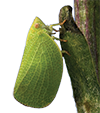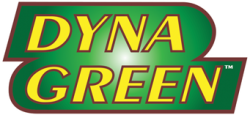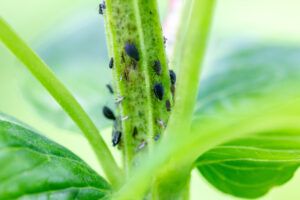| Insects | Description and Trouble Signs |
|---|---|
ANTS | Several kinds may occur in lawns. They make nests underground. Around each entrance, a mound of soil particles may smother grass and make lawn unsightly. Control: Most ants are beneficial and do not require control. Mounds can be washed or raked down then spot treated. Spraying a labeled insecticide 3 feet up and 3 feet out around a house perimeter will prevent them from coming inside. |
Armyworms | These pests are found in dense groupings, feeding on grass to make a somewhat circular area. The caterpillar is up to 1 ½ inches long with green, tan, or black stripes on its back. Damage occurs springtime through late summer. Control: Liquid insecticides work well and do not mow for three days after application. Bacillus thuringiensis products work well on small caterpillars. |
Billbugs | Adults are ¼ to ¾ inch long, black or reddish-brown beetles with long snouts. The chew holes in stems of grass, depositing eggs in them. Eggs hatch into chunky, legless, ½ inch long larvae, which puncture stem and crown as they feed. Kill grass in patches; grass blades break off at soil line. Control: Treat with insecticides in early May before egg laying occurs. Beneficial nematodes can also be used. |
Chinch Bugs | Adults have black bodies with white and reddish legs. Nymphs grow from very small to 1/8 inch long adults. They prefer dry, sunny areas. Chinch bugs feed at all stages of their development, leaving large yellowish-to-brown patches. Control: Avoid over-watering and fertilization. Preventative contact and systemic insecticides should control chinch bugs. Reapply if damage continues. |
| Cutworms | Smooth grayish or brownish caterpillars, up to 2 inches long, feed at night after hiding under protective covering during the day. Cutworms can be a problem from spring to late summer. Control: Apply liquid insecticide late in the day and when caterpillars are small. Best time is to make applications two to three weeks after a peak in moth flight activity. |
Fiery Skippers | Distinguished by yellow, orange and brown butterflies that hover over the lawn during the hot part of the day. Eggs are deposited on grass and hatch into brownish yellow worms that feed and cause round 1 to 2 inch dead spots. A wide range of grasses is susceptible to the larval activity. These larvae chew grass foliage rather than roots. Control: Reduce thatch and use Bacillus thuringiensis when caterpillars are small. |
Grubs, White | Grubs are the larvae of beetles, including Japanese and June. Larvae are thick, whitish, c-shape underground worms that vary from ¾ to 1 ½ inches in length. Grubs eat grass roots, leaving brown, dead patches easily lifted out of the lawn. Control: Aerate well , water deeply, and avoid over-fertilization. Apply granular insecticide in early July. |
Leafhoppers | These yellow or green, slender, wedge-shaped insects are less than ½ inch long. Leafhoppers are especially active in lawns on the East and West coasts, but can be found throughout the country. They suck juices from leaves, causing grass to turn white, later yellow, then brown. Control: Damage is usually insignificant to lawns but most insecticides will control them. |
Mites | Clover mites show us tiny red specks against white paper and are found in lawns nationwide. Bermuda grass mites are pale green and microscopic, occurring in Gulf Coast and Western lawns. The spider-mites suck juices from grass leaves; grass wilts, turns yellow and dies. Mites shown here are greatly magnified. Control: Maintain healthy lawns and provide adequate water. |
| Mole Crickets | A problem in Southern lawns. Brownish insects live in soil during the day and come out at night. These pests are about 1 ½ inches long. They cut off underground stems and roots in the day and work above ground stems. Control: Apply insecticides from April to May when mole cricket nymphs are small and easy to control. at night, leaving lawns with areas that appear closely clipped. |
Nematodes | Transparent round worms with whitish or yellowish tint are tiny, often microscopic. Their presence may not be realized until a bleached-out area is noticed. Lack of vigor and stunting of lawns may occur. The pests feed mainly on grass roots, but some on stem and leaves. Disease may set in because of weakened turf. Control: Nematicides are not currently labeled for home lawn use. |
Sod Webworms | Tan-colored moths, about ¾ inch long, lay eggs at dusk. Gray or light brown larvae up to 1 inch long fed on bluegrasses and bent grasses, doing most damage during spring to midsummer. They feed on shoots and crowns of grass, causing irregular, close clipped brown patches. Control: Apply contact or stomach poison insecticides early in the season when larvae are small. Apply at dusk right before the larvae feed. |



